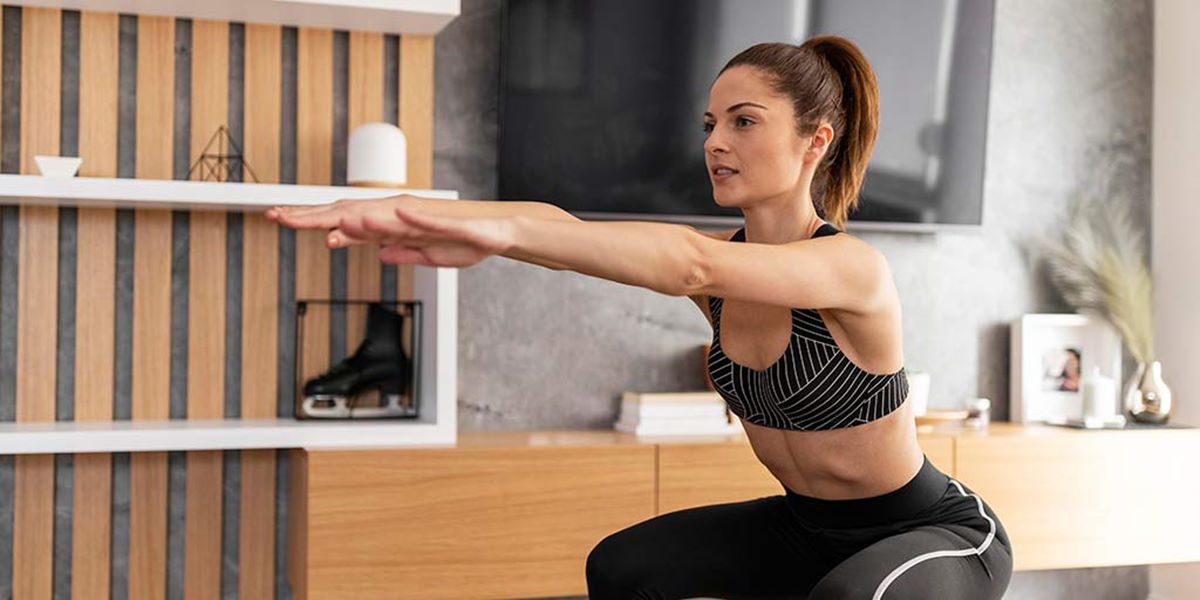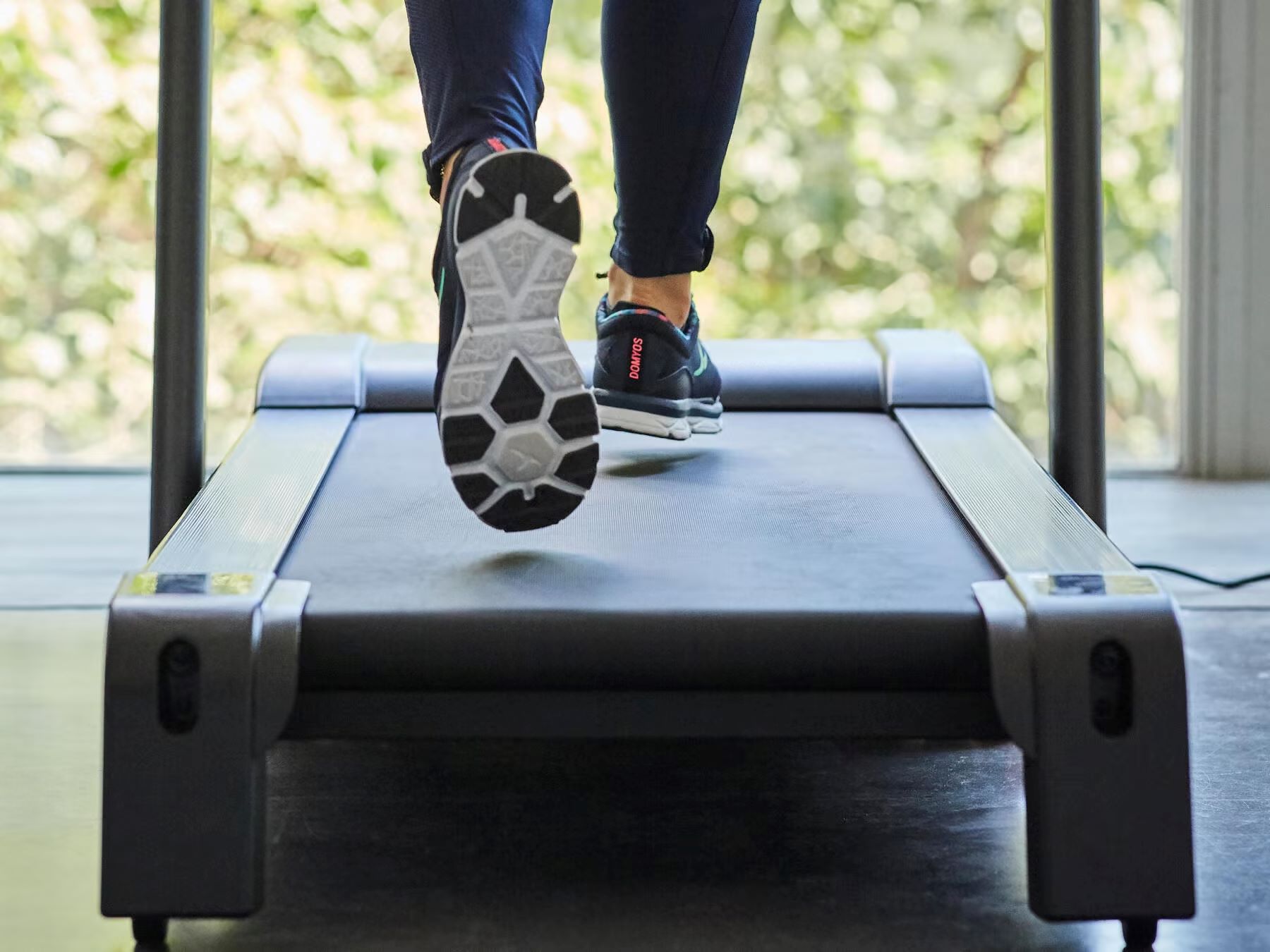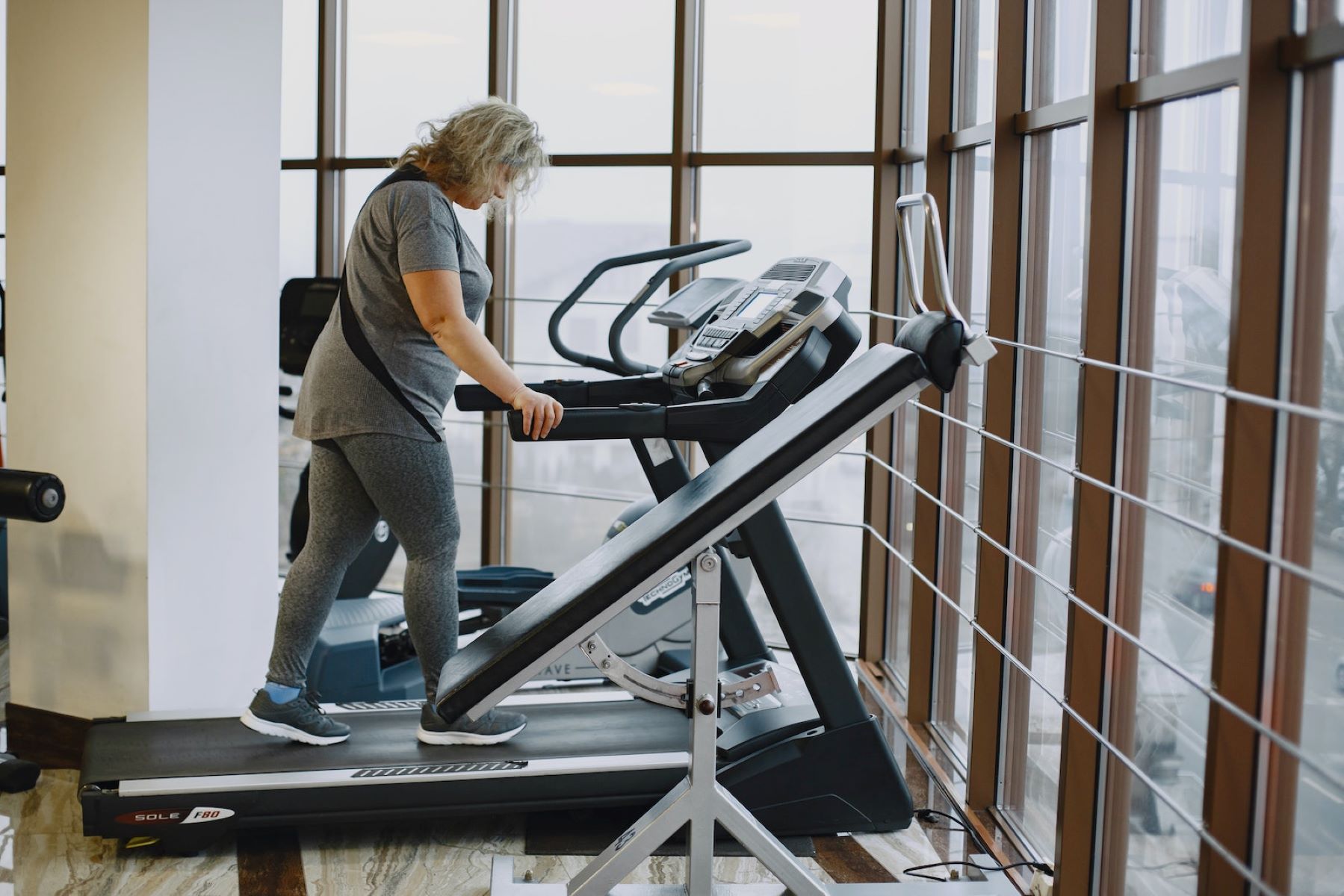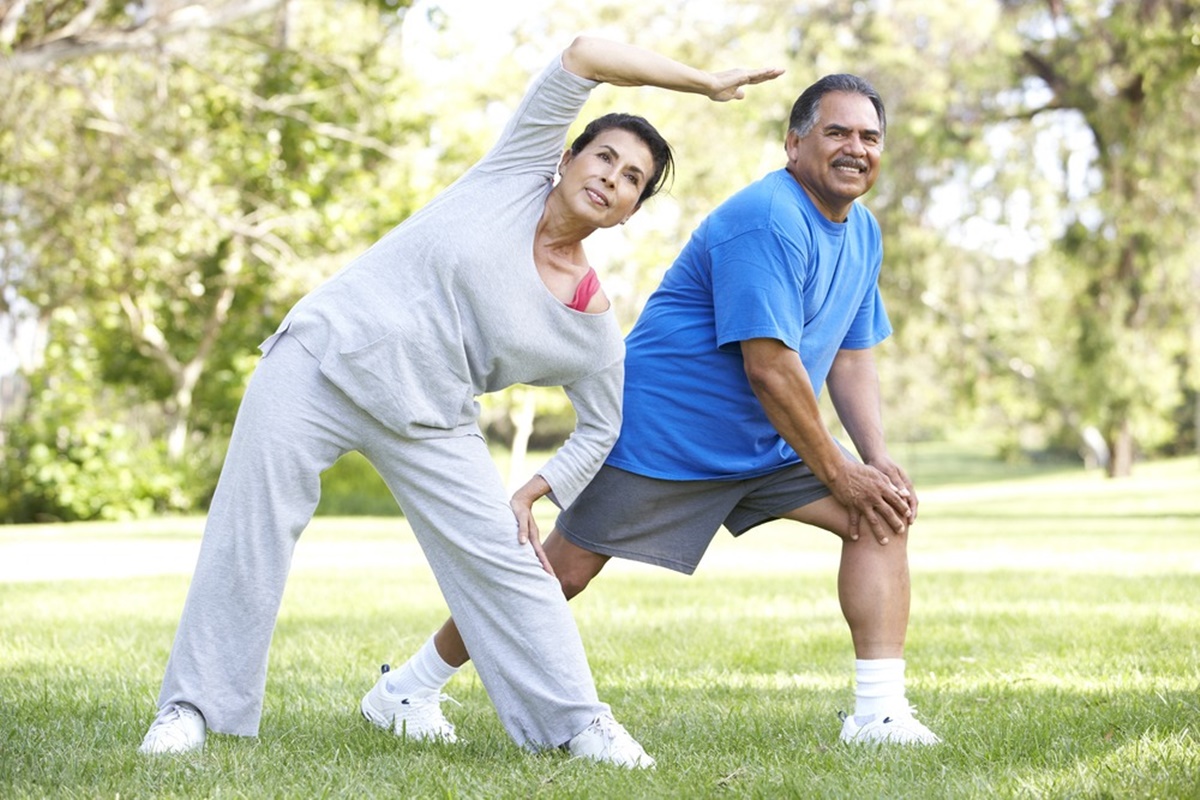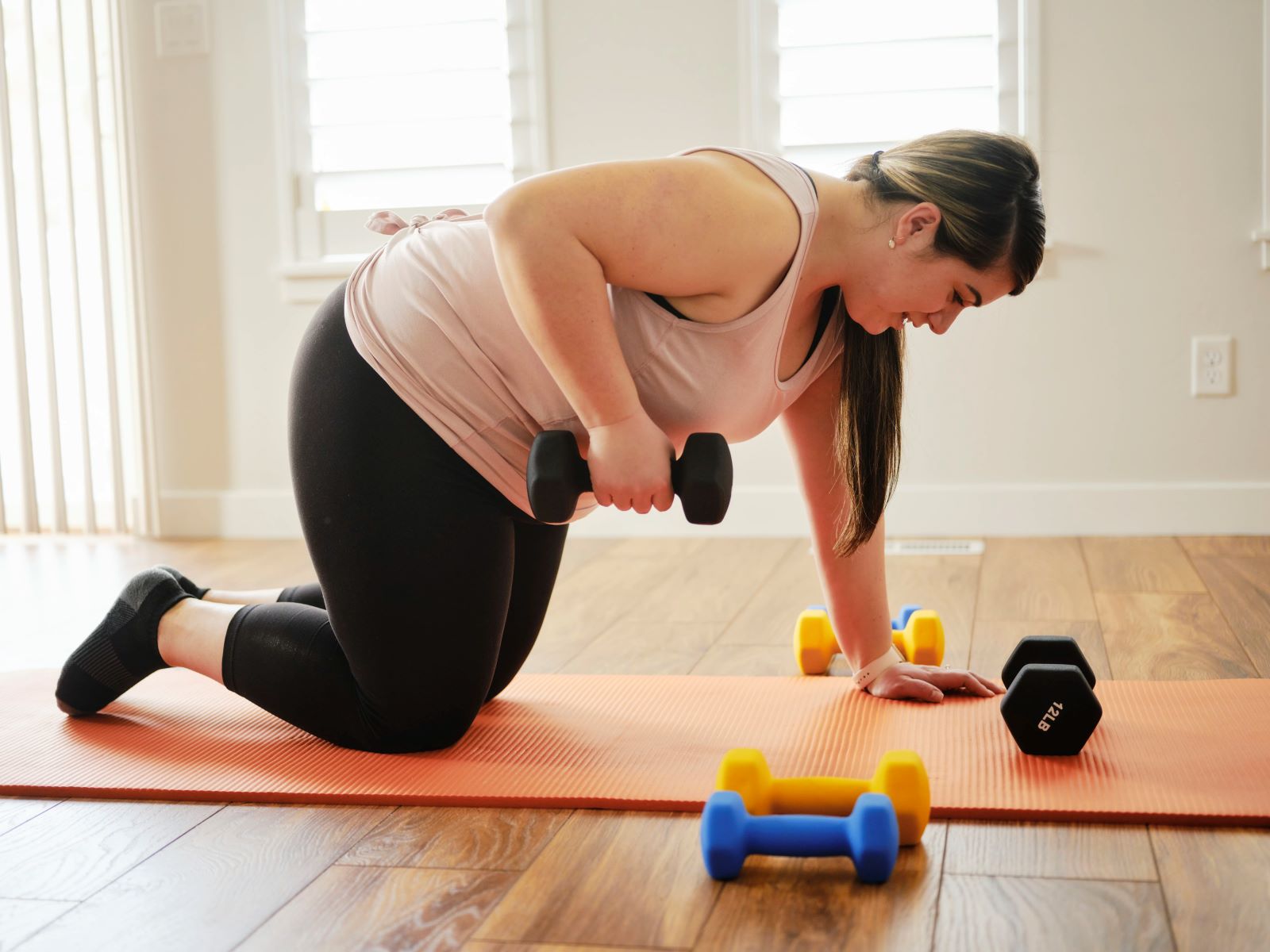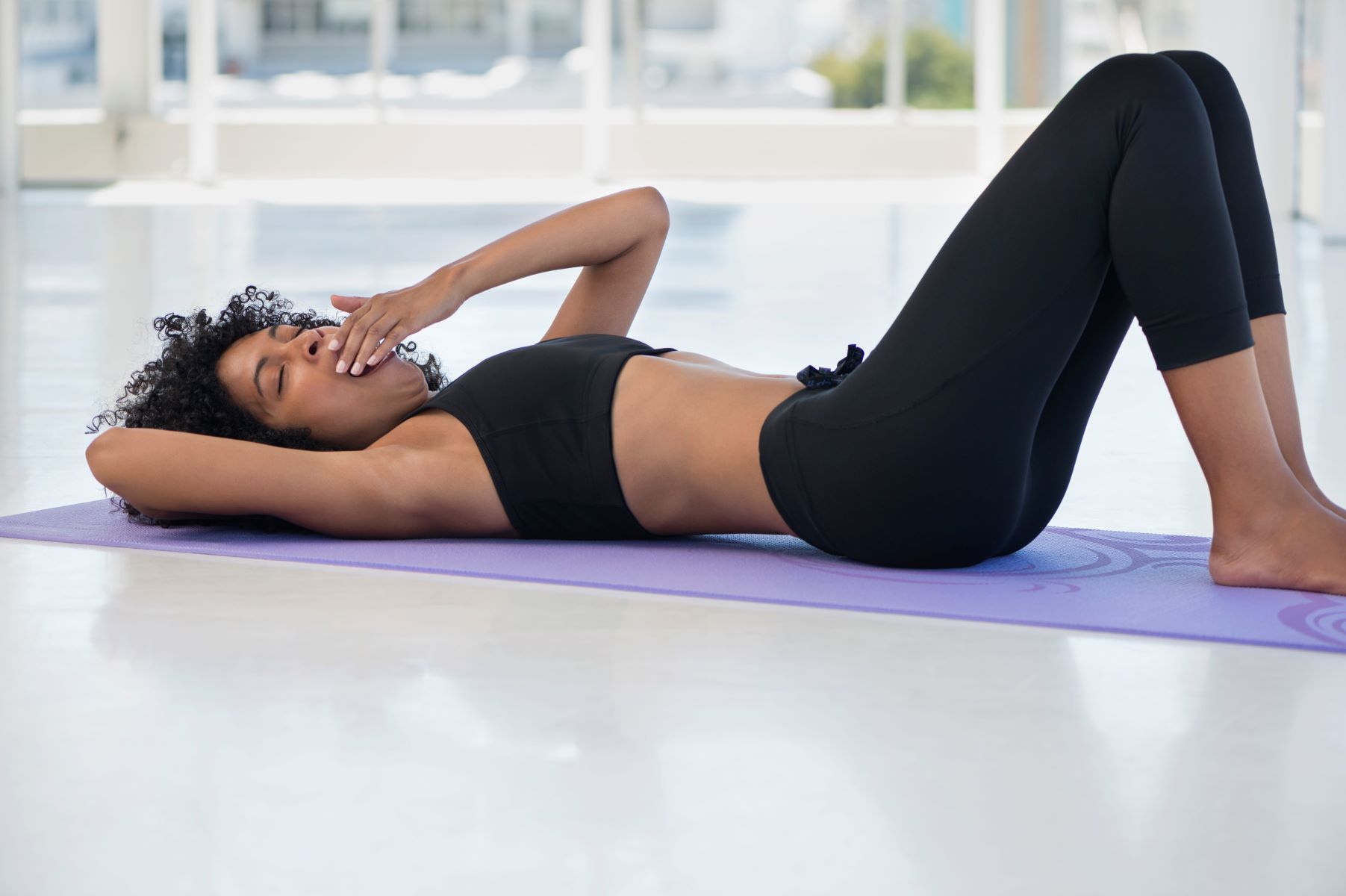Home>Misc>Featured>Why Is It Important To Warm Up Your Muscles Before A Workout?


Featured
Why Is It Important To Warm Up Your Muscles Before A Workout?
Published: August 12, 2023
Learn why warming up your muscles before a workout is crucial for injury prevention and overall performance. Featured tips and benefits you shouldn't miss!
Introduction
When it comes to physical activity, warming up your muscles before a workout is often overlooked or considered optional. However, it is an essential component of any exercise routine, whether you’re a seasoned athlete or a beginner. A proper warm-up prepares your body for the upcoming physical demands, helping you perform better and reducing the risk of injury.
So, what exactly is a warm-up? In simple terms, it is a series of activities and exercises that gradually increase your heart rate, body temperature, and blood flow to your muscles. It prepares your body and mind for the workout ahead, priming your muscles, joints, and cardiovascular system for optimal performance.
While the idea of warming up may seem like an unnecessary step, especially when you’re eager to jump into your workout, the benefits it offers cannot be ignored. From boosting blood flow to preventing injuries and improving flexibility, a proper warm-up sets the foundation for a safe and productive exercise session.
In this article, we will explore the importance of warming up before a workout, the specific benefits it provides, and the best practices for warming up properly.
Definition of Warm-Up
Before delving into the benefits and importance of warming up, it is crucial to understand what exactly a warm-up entails. A warm-up is a period of light exercise or activity that is performed before engaging in more intense physical activity or sports. It helps to gradually increase your heart rate, body temperature, and blood flow to the muscles.
The purpose of a warm-up is to prepare both your body and mind for the upcoming workout or activity. It serves as a transition period, allowing your body to adjust to the increased demands that will be placed on it. By increasing blood flow and oxygen delivery to the muscles, a warm-up helps to optimize muscle performance, reduce the risk of injury, and improve overall exercise efficiency.
A warm-up typically consists of a combination of cardiovascular exercises, dynamic stretching, and mobility exercises. These exercises target the major muscle groups and joints that will be utilized during the workout. The duration of a warm-up can vary depending on the individual and the nature of the activity, but it generally lasts between 5 to 10 minutes.
It is important to note that a warm-up should not be confused with stretching alone. While stretching is a beneficial activity that can improve flexibility, it is just one component of a comprehensive warm-up. A proper warm-up encompasses a range of activities that gradually prepare your body for the specific movements and demands of the workout.
Now that we have a clear understanding of what a warm-up entails, let’s explore the many benefits it offers and why it should be an integral part of your exercise routine.
Benefits of Warming Up
Warming up before a workout offers numerous benefits that can enhance your exercise performance and protect against injuries. Let’s dive into some of the key advantages:
Increased Blood Flow to Muscles: During a warm-up, your heart rate and circulation gradually increase, resulting in improved blood flow to your muscles. This increased blood flow delivers oxygen and nutrients to the working muscles, enhancing their function and performance during exercise.
Improved Muscle Elasticity: Warming up helps to improve muscle elasticity, making them more pliable and less prone to strains or tears. The gentle movements and stretching involved in a warm-up increase the temperature of your muscles, allowing them to contract more efficiently and reducing the risk of muscle stiffness.
Enhanced Range of Motion: A proper warm-up helps to increase your joint flexibility and range of motion. It promotes the lubrication of your joints, reducing friction and allowing for smoother, more controlled movements during exercise. This improved range of motion can help you perform exercises with better form and technique.
Injury Prevention: One of the most significant benefits of warming up is its role in preventing injuries. By gradually increasing the intensity of your workout and preparing your muscles and joints for the upcoming activity, a warm-up helps to reduce the risk of muscle strains, ligament sprains, and other exercise-related injuries.
Mental Preparation for Exercise: Warming up not only prepares your body physically but also mentally. It allows you to shift your focus from the outside world to your workout, preparing your mind for the physical demands ahead. This mental preparation can enhance your concentration and motivation, setting the stage for a more productive workout session.
No matter your fitness level or the type of exercise you engage in, incorporating a proper warm-up into your routine is essential. The next section will highlight how to warm up properly to reap these benefits effectively.
Increased Blood Flow to Muscles
One of the primary benefits of warming up is the increased blood flow to your muscles. During a warm-up, your heart rate gradually increases, pumping more blood to your working muscles. This increased blood flow brings with it a host of benefits that can enhance your exercise performance.
When blood flow to your muscles increases, oxygen and nutrients are delivered more efficiently. Oxygen is essential for the production of adenosine triphosphate (ATP), the energy currency of your muscles. Adequate oxygen supply to your muscles helps them function optimally during exercise, improving endurance and preventing premature fatigue.
In addition to oxygen, increased blood flow also delivers essential nutrients to your muscles. These nutrients, such as glucose and amino acids, provide fuel for your muscles and aid in their recovery and repair process. An adequate supply of nutrients ensures that your muscles have the necessary resources to perform at their best.
Furthermore, increased blood flow helps with the removal of metabolic waste products from your muscles. These waste products, such as carbon dioxide and lactic acid, can accumulate during exercise and contribute to muscle fatigue and discomfort. The improved blood flow during a warm-up helps to flush out these waste products, allowing your muscles to function more efficiently.
Moreover, the increased blood flow during a warm-up helps with temperature regulation in your muscles. As your muscles warm up, the blood vessels expand, allowing for better heat dissipation. This prevents overheating and helps maintain optimal muscle function. Proper temperature regulation is crucial for minimizing the risk of muscle cramps, strains, and other potential injuries.
Overall, the increased blood flow to your muscles during a warm-up sets the stage for improved exercise performance. By ensuring an adequate oxygen supply, delivering essential nutrients, removing waste products, and regulating muscle temperature, a proper warm-up optimizes the functioning of your muscles, allowing you to push harder and achieve better results during your workout.
Improved Muscle Elasticity
Another significant benefit of warming up is the improvement in muscle elasticity. Muscle elasticity refers to the ability of your muscles to stretch and recoil efficiently. It plays a crucial role in various aspects of physical performance, including flexibility, power, and injury prevention.
During a warm-up, the gentle movements and stretching exercises help to increase the temperature of your muscles. This increase in temperature leads to improved blood flow, which in turn enhances muscle elasticity. When your muscles are warmer, they become more pliable and less prone to strains or tears.
A warm-up also helps to activate the stretch reflex in your muscles. The stretch reflex is a protective mechanism that causes your muscles to contract when they are stretched suddenly. By gradually and gently stretching your muscles during a warm-up, you activate the stretch reflex at a controlled pace, allowing your muscles to lengthen without triggering a sudden contraction.
As you engage in dynamic stretching exercises during a warm-up, your muscles are taken through a full range of motion. This helps to increase the extensibility of your muscles, allowing them to stretch further without causing discomfort or injury. Improved muscle elasticity leads to increased flexibility, which can enhance your performance in various activities, including sports, yoga, and everyday movements.
In addition to flexibility, improved muscle elasticity also contributes to the generation and transfer of power. When your muscles are more elastic, they can store and release energy more effectively. This translates to increased power output during activities that require explosive movements, such as jumping, sprinting, or lifting weights.
Moreover, improved muscle elasticity through warming up can help to prevent muscle strains and tears. When your muscles are properly warmed up and elastic, they can absorb and distribute forces more efficiently. This reduces the strain on individual muscle fibers and decreases the risk of overstretching or tearing the muscle tissue.
By incorporating a warm-up routine into your exercise regimen, you can enhance the elasticity of your muscles, improving flexibility, power generation, and injury prevention. The next section will explore how a warm-up can enhance your range of motion.
Enhanced Range of Motion
One of the key benefits of warming up is the enhanced range of motion it provides. Range of motion refers to the degree of movement that a joint can achieve. Having a good range of motion is essential for performing exercises and activities with proper form and technique.
During a warm-up, specific exercises and movements are performed to gradually increase the flexibility and mobility of your joints. This helps to improve the range of motion of your joints, allowing them to move more freely and comfortably during exercise.
When you engage in dynamic stretching exercises as part of your warm-up routine, you take your joints through their full range of motion. This helps to lubricate the joints and improve their mobility. It also helps to lengthen and loosen the muscles and surrounding tissues, allowing for a wider range of joint movement.
By increasing your range of motion, you can perform exercises more effectively and with better form. For example, in strength training exercises such as squats or lunges, a greater range of motion allows for a deeper squat or lunge, engaging a larger number of muscles and promoting overall strength gains.
Having an enhanced range of motion also reduces the risk of joint and muscle injuries. When your joints can move freely and without restriction, the forces exerted on them are distributed more evenly. This reduces the strain on specific joints and muscles, decreasing the likelihood of overuse injuries or joint imbalances.
Furthermore, an improved range of motion can also benefit your everyday activities. Whether you are bending down to pick something up, reaching overhead, or performing any range of movements in your daily life, having better joint mobility can make these activities easier and more comfortable.
Ultimately, warming up before exercise helps to enhance your range of motion, enabling you to move more efficiently and safely. By incorporating dynamic stretching and mobility exercises into your warm-up routine, you can improve joint mobility, increase flexibility, and optimize your overall movement capabilities.
Injury Prevention
One of the most crucial benefits of warming up is its role in injury prevention. By taking the time to properly warm up before engaging in physical activity, you can significantly reduce the risk of sustaining exercise-related injuries.
A warm-up helps to prepare your body for the demands of your workout by gradually increasing your heart rate, body temperature, and blood flow to your muscles. This prepares your muscles, joints, and connective tissues for the upcoming activity, making them more resilient and less susceptible to injury.
One of the main causes of exercise-related injuries is the lack of proper preparation. When you jump straight into intense or high-impact activities without warming up first, your muscles and joints are caught off guard, increasing the risk of strains, sprains, and other injuries.
During a warm-up, your muscles undergo a process called the warm-up response. This response includes several physiological changes that help protect your muscles and reduce the risk of injury. Increased blood flow leads to improved muscle elasticity, making them more resistant to strains or tears. It also helps to activate the stretch reflex, which acts as a protective mechanism to prevent sudden muscle contractions when a muscle is stretched too forcefully.
Furthermore, a warm-up allows your body to adjust to the demands of the workout gradually. It gradually increases the intensity of exercise, allowing your body to adapt to the stresses placed on it. This gradual progression helps to strengthen the muscles and connective tissues, reducing the likelihood of injury due to sudden or excessive strain.
In addition, a warm-up helps to identify any potential imbalances or limitations in your body. This awareness allows you to take appropriate precautions and modify your workout, reducing the risk of exacerbating pre-existing conditions or weaknesses.
Overall, by incorporating a proper warm-up routine into your exercise regimen, you can significantly reduce the risk of exercise-related injuries. Taking the time to prepare your body adequately before engaging in physical activity sets a solid foundation for a safe and productive workout.
Mental Preparation for Exercise
In addition to the physical benefits, warming up also plays a crucial role in mental preparation for exercise. A warm-up provides the opportunity to shift your focus from the outside world to the upcoming workout, allowing you to mentally prepare for the physical demands ahead.
Engaging in a warm-up routine helps create a mental transition from your everyday life to the exercise environment. It allows you to leave behind any distractions or stressors and enter a focused mindset, ready to fully engage in your workout.
During a warm-up, you can use this time to set specific goals and intentions for your workout. By visualizing yourself successfully completing the exercises, you can boost your confidence and motivation. This mental preparation can have a significant impact on your overall performance and allow you to push yourself further.
Moreover, a warm-up helps to activate your cognitive functions and improve your mental alertness. As you engage in physical activity, your brain releases endorphins and other neurotransmitters that enhance your mood and cognitive function. This can help improve your concentration, reaction time, and overall mental sharpness during your workout.
Additionally, a warm-up provides an opportunity to mentally rehearse the specific movements and techniques involved in your workout. This mental rehearsal can help improve your muscle memory and motor skills, allowing you to perform exercises with better form and efficiency.
Warming up also creates a ritual or routine before your workout, which can have a positive impact on your mental state. Having a consistent warm-up routine can help you establish a sense of readiness and familiarity, reducing any anxiety or nervousness you may have before exercise. It can help create a sense of discipline and commitment, making it easier to stay focused and motivated throughout your workout.
Overall, warming up before exercise is not only essential for physical preparation but also for mental preparation. By taking the time to mentally tune-in, set goals, activate cognitive functions, and establish a routine, you can enhance your mental readiness and optimize your performance during your workout.
How to Warm Up Properly
Now that we understand the importance and benefits of warming up, let’s explore how to warm up properly. A well-designed warm-up routine should aim to gradually prepare your body for the upcoming exercise or activity.
Here are some essential components to include in your warm-up:
Dynamic Stretching: Start your warm-up with dynamic stretching exercises that target the major muscle groups you will be using during your workout. Dynamic stretches involve controlled movements that take your muscles through a full range of motion. Examples include arm circles, leg swings, and walking lunges. Perform each stretch for 10-15 repetitions on each side.
Light Aerobic Activity: Incorporate 5-10 minutes of light aerobic activity into your warm-up routine. This can include brisk walking, jogging, cycling, or jumping jacks. The aim is to gradually increase your heart rate and body temperature, preparing your cardiovascular system for the upcoming exercise.
Joint Mobilization Exercises: Perform a series of exercises that focus on joint mobility and range of motion. This can include shoulder rolls, ankle circles, and wrist rotations. The goal is to gently move and warm up your joints, reducing any stiffness or tightness.
Specific Warm-Up Exercises: Include specific exercises that mimic the movements and intensity of the main workout. For example, if you plan to do squats, start with bodyweight squats or lunges. If you are going to perform bench presses, start with lighter weights or push-ups. These exercises help to activate the specific muscles and movement patterns that will be used during your workout.
It is important to note that the duration and intensity of your warm-up should be relative to the workout you plan to do. A more intense or complex workout may require a longer warm-up, whereas a lighter or less demanding workout may require less time.
Listen to your body during the warm-up process. It is normal to feel your muscles and joints warming up, but if you experience any pain or discomfort, modify or discontinue the exercise. It’s better to err on the side of caution to prevent injuries.
Remember, warming up should not be rushed or skipped. Even if you are short on time, a brief warm-up is better than none at all. Allocate at least 5-10 minutes to properly warm up before engaging in any physical activity.
By following these guidelines and tailoring your warm-up routine to your specific needs and goals, you can ensure that your body is adequately prepared for the demands of your workout, reducing the risk of injury and optimizing your overall performance.
Dynamic Stretching
Dynamic stretching is an important component of a proper warm-up routine. Unlike static stretching, which involves holding a stretch for an extended period, dynamic stretching involves moving the body through a full range of motion in a controlled manner. This type of stretching is highly beneficial for preparing your muscles and joints for physical activity.
Dynamic stretching helps to increase blood flow to the muscles, improve flexibility, and enhance muscle activation. It also promotes better coordination and neuromuscular control, which are essential for optimal movement during exercise.
Here are some dynamic stretching exercises you can incorporate into your warm-up:
Arm Circles: Stand with your feet shoulder-width apart. Extend your arms straight out to the sides. Begin making small circles with your arms, gradually increasing the size of the circles. After several rotations, change directions and repeat the movement.
Leg Swings: Stand next to a wall or sturdy object for support. Swing one leg forward and backward in a controlled manner, gradually increasing the range of motion. Repeat with the other leg. You can also perform side-to-side leg swings by standing perpendicular to the support and swinging your leg across your body.
Walking Lunges: Take a step forward with your right leg, lowering your body into a lunge position. Push off with your right foot and bring your left leg forward into the next lunge. Repeat while walking forward, alternating legs with each step.
High Knees: Stand tall with your feet hip-width apart. Begin jogging in place, lifting your knees as high as you comfortably can while pumping your arms. Aim to lift your knees to at least hip level, engaging your core and maintaining an upright posture.
Butt Kicks: Stand tall with your feet hip-width apart. Begin jogging in place, kicking your heels up towards your glutes. Aim to touch your glutes with your heels as you continue to jog in a controlled and rhythmic motion.
Perform each dynamic stretching exercise for 10-15 repetitions or as desired. You can easily adapt these exercises to your fitness level and the specific muscles you want to target.
Remember to focus on controlled movements and gradually increase the range of motion as your muscles warm up. Dynamic stretching helps to actively engage and warm up the muscles, preparing them for the upcoming workout.
By incorporating dynamic stretching into your warm-up routine, you can improve muscle flexibility, increase blood flow, and enhance muscle activation. These exercises will help prepare your body for the demands of your workout and reduce the risk of injury.
Light Aerobic Activity
Including light aerobic activity as part of your warm-up routine is a valuable step in preparing your body for exercise. This component raises your heart rate, increases blood flow, and gradually elevates your body temperature, priming your cardiovascular system for the upcoming workout.
Here are some light aerobic activities that you can incorporate into your warm-up:
Brisk Walking: Take a brisk walk for 5-10 minutes. Focus on maintaining a faster pace than your regular walking speed, but still at a level that allows you to carry on a conversation comfortably. This gentle cardio exercise helps to increase blood flow and gently raise your heart rate.
Jogging: If you are looking for a more vigorous warm-up, you can opt for a light jog. Start with a slow and steady pace, gradually increasing your speed as your body warms up. Aim to jog for 5-10 minutes, focusing on maintaining a consistent and comfortable pace.
Cycling: Hop on a stationary bike or go for a leisurely bike ride to elevate your heart rate. Pedal at a moderate pace for 5-10 minutes, ensuring that your muscles and cardiovascular system are gradually being engaged and warmed up.
Jumping Jacks: Perform sets of jumping jacks for a few minutes. Start with a slower pace and gradually increase your speed and intensity. This movement targets various muscle groups and helps elevate your heart rate.
Dancing: Put on your favorite upbeat music and engage in some simple dance moves. This fun and dynamic activity get your body moving in different directions while increasing your heart rate and enhancing blood flow.
The duration and intensity of the light aerobic activity should be relative to your fitness level and the workout you have planned. The goal is to gently elevate your heart rate and circulation without causing fatigue or excessive exertion.
By incorporating light aerobic activity into your warm-up routine, you increase blood flow to your muscles and raise your core body temperature. This helps to activate your cardiovascular system and prepare it for the demands of the upcoming exercise.
Remember to listen to your body during the light aerobic activity. It should not be overly strenuous, but rather a gentle warm-up to gradually prepare your body for the main workout. Take it at your own pace and make modifications as needed.
By engaging in light aerobic activity as part of your warm-up, you can enhance your physical readiness, improve circulation, and optimize your overall performance during the upcoming exercise routine.
Joint Mobilization Exercises
Incorporating joint mobilization exercises into your warm-up routine is essential for preparing your joints for the upcoming physical activity. These exercises help to improve joint flexibility, increase range of motion, and reduce stiffness, ensuring that your joints are ready for the movements involved in your workout.
Here are some joint mobilization exercises that you can include in your warm-up:
Shoulder Rolls: Stand with your feet shoulder-width apart and relax your arms by your sides. Slowly roll your shoulders forwards in a circular motion, aiming to make big, fluid circles. After a few rotations, reverse the direction and roll your shoulders backward. This exercise helps to warm up and mobilize the shoulder joints.
Ankle Circles: Stand tall with your feet hip-width apart. Lift one foot off the ground and rotate your ankle in a circular motion, starting with small circles and gradually increasing the size. Perform several circles in one direction, then switch to the other direction. Repeat with the other foot. Ankle circles help to improve ankle mobility and range of motion.
Wrist Rotations: Extend one arm straight out in front of you, palm facing down. Begin rotating your wrist in a circular motion, first in one direction and then in the other direction. Perform several rotations on each wrist. This exercise helps to warm up and mobilize the wrist joints, particularly beneficial for activities that involve gripping or lifting.
Neck Tilts: Stand or sit tall with your shoulders relaxed. Tilt your head to one side, bringing your ear towards your shoulder, and hold for a few seconds. Return to the starting position and repeat on the other side. Perform several repetitions on each side. Neck tilts help to mobilize and release tension in the neck and upper spine.
Spinal Twists: Stand with your feet hip-width apart and place your hands on your hips. Slowly rotate your torso to one side, keeping your hips and feet facing forward. Hold the position for a few seconds, then rotate to the other side. Perform several twists on each side. Spinal twists help to mobilize the spine and improve its flexibility.
Incorporating joint mobilization exercises into your warm-up routine helps to prime your joints for movement and ensures that they have adequate flexibility and range of motion during your workout. These exercises also help to decrease any stiffness or tension and reduce the risk of joint discomfort or injuries.
Specific Warm-Up Exercises for Different Muscle Groups
A crucial aspect of warming up properly is targeting specific muscle groups that will be involved in your workout. By incorporating specific warm-up exercises, you can activate and prepare these muscles for the upcoming physical activity. This targeted approach helps to enhance muscle performance, improve coordination, and reduce the risk of muscle imbalances or injuries.
Here are some examples of specific warm-up exercises for different muscle groups:
Lower Body:
- Squats: Perform a set of bodyweight squats or use lighter weights to warm up your glutes, quadriceps, and hamstrings.
- Lunges: Perform walking lunges or stationary lunges to target the muscles of your legs, including the quadriceps, hamstrings, and glutes.
- Leg Extensions: Use a leg extension machine or resistance band to warm up your quadriceps by performing controlled leg extensions.
Upper Body:
- Push-Ups: Start with a set of push-ups to activate your chest, shoulders, and triceps.
- Shoulder Press: Use lighter dumbbells or resistance bands to perform shoulder presses, targeting the deltoids and upper back muscles.
- Bicep Curls: Use lighter dumbbells or resistance bands to perform bicep curls, warming up your biceps and forearm muscles.
Core:
- Plank: Hold a plank position for a set amount of time to engage your core muscles, including the rectus abdominis and obliques.
- Crunches: Perform a set of crunches to activate the abdominal muscles and prepare them for core stabilization exercises.
- Supermans: Lie on your stomach and lift your arms and legs off the ground simultaneously, engaging your lower back and glute muscles.
Remember to choose warm-up exercises that are specific to your planned workout and the muscle groups you will be targeting. Perform each exercise with controlled movements and focus on engaging the targeted muscles.
If you are performing a full-body workout, it is essential to include warm-up exercises that target different muscle groups to ensure an overall prep. This will help you activate and engage the major muscle groups and promote balanced muscle activation and coordination.
By incorporating specific warm-up exercises for different muscle groups, you can prime your muscles for the upcoming workout, enhance muscle activation, and reduce the risk of muscle imbalances or injuries.
Conclusion
Incorporating a proper warm-up routine into your exercise regimen is essential for optimizing your performance and reducing the risk of injuries. A warm-up prepares your body and mind for the physical demands of your workout, allowing you to perform at your best and stay safe during exercise.
Throughout this article, we have explored the various benefits of warming up, including increased blood flow to muscles, improved muscle elasticity, enhanced range of motion, injury prevention, and mental preparation for exercise. These benefits emphasize the importance of taking the time to warm up before engaging in any physical activity.
To warm up properly, it is important to include dynamic stretching exercises, light aerobic activity, joint mobilization exercises, and specific warm-up exercises for different muscle groups. These components work together to gradually increase your heart rate, body temperature, and blood flow to your muscles, preparing them for the upcoming workout.
Remember that a warm-up should be tailored to your fitness level and the specific exercises or activities you plan to engage in. Pay attention to your body and make adjustments as needed to ensure a safe and effective warm-up routine.
By prioritizing and incorporating a warm-up into your exercise routine, you can enhance your performance, improve flexibility, prevent injuries, and mentally prepare for your workout. So, next time you lace up your sneakers or step into the gym, don’t skip the warm-up. Your body will thank you for it.


